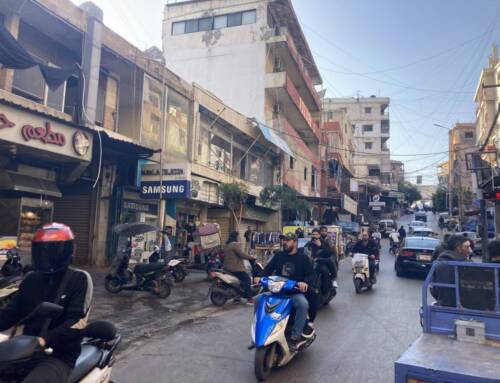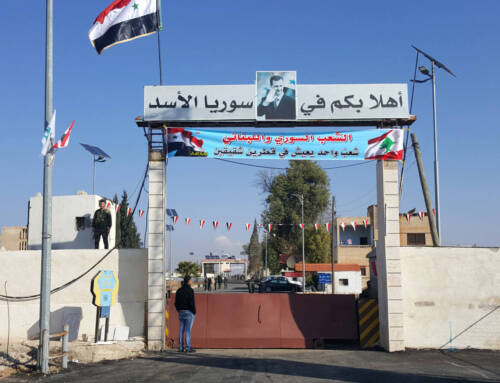‘Syria is safe, refugees should return’: The dangers of the growing narrative
Despite the security risks that Syrian refugees may face upon return to their country, the push in this direction is reaching a crescendo.
29 June 2021
BEIRUT – After a decade of conflict, the push for Syrian refugees to return is gaining traction despite human rights watchdogs’ warnings on the security risks returnees may face.
Returns are still low, but the pressure to return is increasing across the globe, from the withdrawal of protection status to Syrians in Denmark to deportations from Lebanon.
How many have returned so far?
The Syrian war has displaced more than half of the pre-war population, estimated at 22 million, with 6.2 million internally displaced persons (IDPs) and 5.6 million Syrian refugees worldwide.
So far, the UNHCR has documented 279,684 returns to Syria. This figure refers only to returns verified by the UN, while the actual figure is expected to be higher.
Most Syrian refugees settled in neighboring countries like Lebanon, Turkey, Jordan and Iraq. In each of them, the returnee figures are infimum in comparison to the total number of refugees.
In 2017 and 2018, returns were steady at around 50,000 per year, peaking in 2019 with 94,000 returns. But in 2020, likely compounded by border closures related to the COVID-19 pandemic, returns decreased to less than 31,000.
For 2021, “the international community should not expect to see a substantial increase in voluntary returns; refugees are acutely aware of the security risks they would face if returned to Syria,” Nessma Bashi, Legal Fellow at Syria Justice and Accountability Centre (SJAC), said. “If we see an increase in returns, we are likely seeing people who are being pushed involuntarily under the guise of voluntary returns,” she added.
That’s the case in Turkey. In 2019, Human Rights Watch (HRW) documented how dozens of Syrians were deported after being forced to sign voluntary return forms that they were not allowed to read.
These deportations/forced returns have remained a constant in the region over the past few years. In 2017, HRW warned that 400 Syrian refugees were deported per month from Jordan. In 2019, 2,731 Syrians were deported from Lebanon. In 2020, Amnesty International documented the deportation of six Syrians from Turkey. The latest deportation, reported by L’Orient Today, involved 15 Syrians who were sent back to Syria from Lebanon this month.
The push for return: From Denmark to Turkey
Denmark’s decision to withdraw the protection status of dozens of Syrians on the basis that the Damascus area is safe marks a turning point in the ‘pushing for return’ narrative.
[irp posts=”40237″ name=”Denmark strips 94 Syrian refugees of their residency permits, deeming Damascus safe for their return”]This is a “very dangerous policy adopted by the Danish government on a fundamentally flawed assessment that the security situation has improved significantly,” Haya Atassi, a spokeswoman for the Syrian Association for Citizens’ Dignity (SACD), said. “They [Danish authorities] live in a parallel universe, completely ignoring the reality in Assad-held areas and the rest of Syria,” she added.
“Refoulment of people back to Syria is a blatant violation of international and European law”
In Denmark, Syrians who lose their residency permits are pushed to live in isolated departure centers. “The question must be asked: is Denmark essentially coercing vulnerable individuals to sign voluntary repatriation agreements by forcing them to live in isolated, prison-like ‘departure” centers,’” Bashi said.
The Danish move “sets one of the most dangerous precedents concerning Syrians everywhere,” Atassi said, pointing that this step breaches Article 3 of the European Court of Human Rights, the UNHCR protection thresholds on return and the official European Commission position.
Greece recently designated Turkey as a safe third country, a position qualified by Bashi as “very concerning” given that it is known that “Turkey has been refouling people back to Syria.”
Lebanon also ranks high on the list of countries of concern. “Lebanon has always been one of the worst [countries] in terms of the discrimination and coerced returns,” Sara Kayyali, a Syria Researcher at HRW, said.
[irp posts=”26241″ name=”Russia urges Syrian refugees to return – with no guarantees for their safety”]This direct or indirect push to return is at odds with international refugee law that seeks to protect those who face credible threats in their home countries until it is deemed safe for them to return.
“Refoulment of people back to Syria is a blatant violation of international and European law,” Bashi concluded.
If authorities “forcibly return or remove the protection status of Syrians, forcing them to return without very concrete guarantees of their safety, they will be in contravention of their own obligations under international law and liable to be held accountable at the highest levels,” Kayyali warned.
The risks of returning
The deadly attack on the al-Shifa hospital in Afrin this June counters the ‘the war is over’ narrative. So does the May report of the Syrian Network Human Rights (SNHR) that documented 96 extrajudicial killings of civilians, 12 of them killed by the Syrian government forces, one by ISIS, one by the Turkey-backed Syrian National Army and one by the US-led coalition forces.
“How can people be safe to return when the main cause of displacement, with the vast majority of all the displaced Syrians being displaced by the Assad regime, is still operating in the exact way, with impunity?” Atassi asked.
According to a SACD study, 81% of all displaced Syrians want to see the Syrian regime gone before they consider returning. Syrian regime forces are responsible for 86,276 forcibly disappeared persons and 14,338 victims of torture, according to SNHR.
The risk of detention and persecution for returnees is real. This June, 15 Palestinians were detained in Syria after returning from Lebanon, Sweden and the Netherlands. SAJC’s report this month includes the testimonies of four Syrians who were detained upon return.
“We are seeing cases of individuals that have been arbitrarily arrested on return; there are still incidences of torture and this is prevalent primarily among the men but also among women,” Kayyali warned.
In an SACD study, 68% of returnees to government-held areas said they regret their return. Currently, 90% of the population in Syria live below the poverty line, and 12.4 million are food insecure.
Another obstacle for return is the fact that many Syrians have lost their homes to destruction or confiscation as a result of myriad Housing, Land and Property (HLP) violations.
To return, Syrians must go through a security clearance process run by the Syrian intelligence. According to SJAC, the Military Intelligence’s Branch 291 investigates the applicant’s area of origins, involvement in the revolution and if he or she left the country illegally.
Getting the security approval does not equal a safe return. “In terms of securing the safety of returnees, a security agreement between countries is an unrealistic solution for guaranteeing immunity given the multitude of threats and dangers awaiting returnees,” Bashi said. This security clearance “could mean that they make it to Syria for a day and the next day they get a call and need to go to a security branch,” she added.
“We’ve documented cases of individuals who have signed a reconciliation agreement, who have been provided with so-called permission to return, or who have been even deported in coordination with the Syrian authorities and have been arrested, harassed, tortured, disappeared,” Kayyali said.
The danger of being conscripted also looms large for many Syrian men of military service age. “Draft evaders are at particular risk upon their return to Syria, including forced conscription and financial extortion,” said Bashi.
The “safe, voluntary and dignified return” established by the UN Security Council resolution 2449 seems a far-fetched scenario so far.







